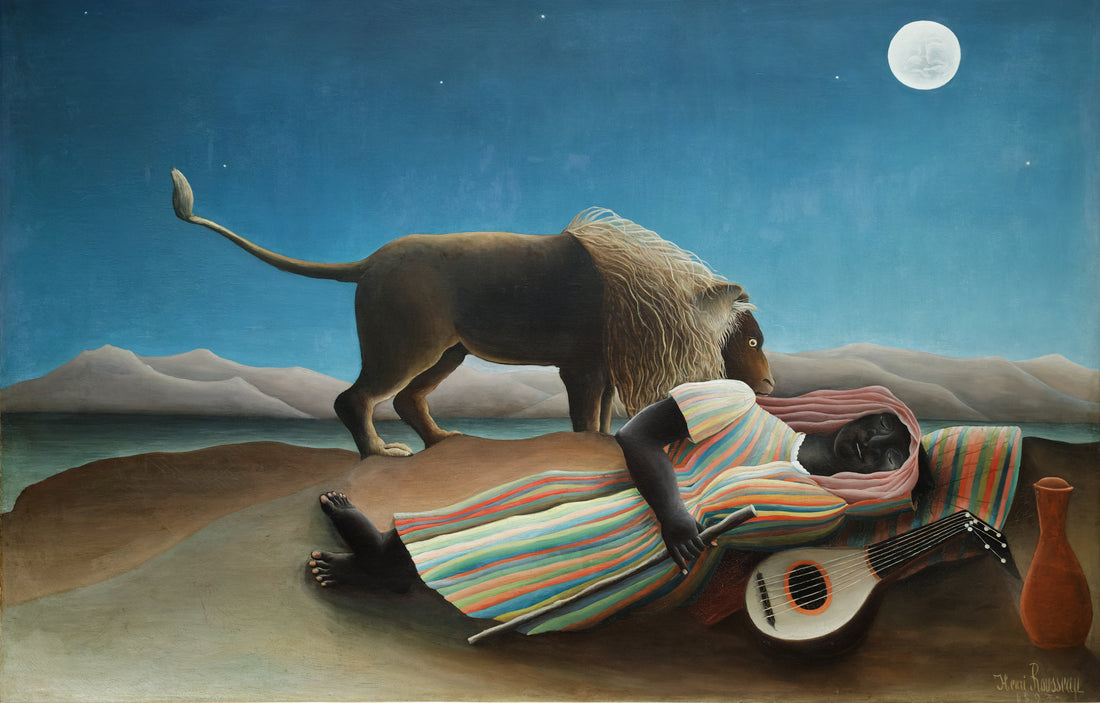Featured Artwork: Henri Rousseau (1897) The Sleeping Gypsy
Art is a multi-dimensional realm, and one of its fundamental elements is space. Space in art can be described as the area surrounding, within, or around an artwork. It's a powerful tool that artists use to create depth, perspective, and convey emotions. In this guide, we will explore the various aspects of space in art and how artists employ it to enrich their creations.
Explore our curated selection of contemporary artists from around the globe.
Naturalist Gallery offers artist representation internationally. Apply your art.
The Uses of Space in Art:
Georges Braque (1926) The Bowl of Grapes
Understanding how to utilize space is crucial for artists. Neglecting its significance can result in flat, unconvincing artwork. To create the illusion of space on a 2-Dimensional surface, artists employ six fundamental techniques:
-
Overlapping: Objects closer to the viewer block the view of objects behind them, creating depth and distance.
-
Placement on the paper: Objects positioned higher within the picture plane appear farther away.
-
Size: Smaller objects tend to appear further from the viewer.
-
Detail: Objects further away should have less detail compared to those in the foreground.
-
Color and Value: Objects farther away are cooler in color temperature and lighter in value, while those closer are warmer and darker.
-
Perspective: Linear perspective, achieved through lines and vanishing points, is a powerful method to create space on a flat surface.
Elements of Art:
Frida Kahlo (1940) Self-Portrait with Cropped Hair
To comprehend space fully, it's essential to consider it in the context of the seven elements of art. These elements, which include color, line, form, shape, texture, and value, are the building blocks of artistic expression. Space interacts with these elements and helps artists convey their ideas effectively.
Positive and Negative Space:
Suzuki Harunobu (1768) Untitled
Art historians categorize space into two main types: positive and negative space. Positive space refers to the subject of the artwork, while negative space pertains to the empty areas created around, between, and within the subjects. The interplay between positive and negative space can profoundly impact the composition and visual impact of a piece.
Opening Spaces:
Christo and Jeanne-Claude (1991) The Umbrellas
In three-dimensional art, negative spaces are the open or relatively empty parts of the piece. For instance, sculptures may have holes or voids. In two-dimensional art, negative space can be used strategically to direct the viewer's attention, emphasize elements, or imply movement.
Space and Perspective:
Franz Marc (1912) Two Blue Donkeys (Horse and Donkey)
Perspective plays a vital role in creating the illusion of depth in art. Artists use space to convey this perspective. Elements such as the relative size of objects, the position of the horizon line, and vanishing points help create the illusion of three-dimensional space.
The Physical Space of an Installation:
Constantin Brâncuși (1928) Bird in Space
Artists often consider the physical space in which their work will be displayed. The environment, lighting, and surrounding objects all play a role in how an artwork is perceived. This is particularly crucial for sculptors and installation artists who must adapt their work to the exhibition space.
Umberto Boccioni (1910) The City Rises
View limited edition prints by contemporary artists at Naturalist Gallery.
Space is a fundamental element in art, essential for creating depth, perspective, and visual impact. It interacts with other elements of art to convey emotions, concepts, and ideas. By mastering the use of space, artists can enrich their work and captivate their audiences. As you explore the world of art, take a closer look at how space is harnessed by various artists to distort reality, convey emotions, and convey powerful messages. Understanding space in art allows us to appreciate and interpret artworks more deeply, unlocking the mysteries of artistic expression.
Vincent van Gogh (1890) Landscape at Auvers in the Rain
You may also find the following articles helpful:
Form: Understanding Dimensionality
Tone in Art: Understanding Color Value
Line: Types, Techniques, Element of Art
How to Get Your Work in an Art Gallery









